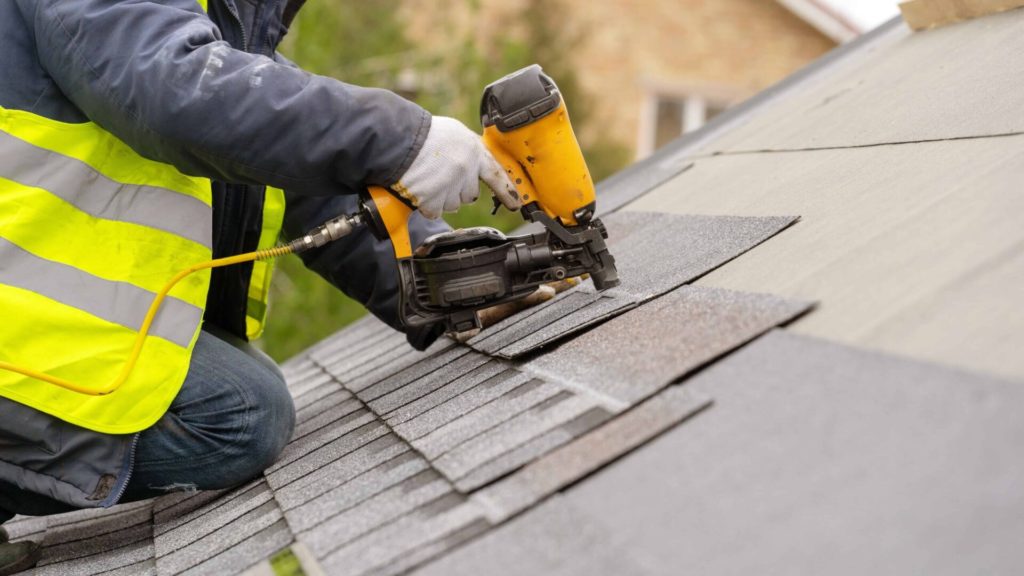If you have a leaky roof, you’re most likely going to need to call in a roofing professional to fix it. There are, however, instances where you can repair your roof on your own, and that’s exactly what we’ll be taking a look at today – all the things to keep in mind when you’re fixing the roof.
Finding a Roof Leak
This is usually the first thing you’re going to have to do if you find water dripping in your house from the roof. Most times, it won’t actually be dripping – instead, it will flow alongside the bearing beams and walls.
Leaking point is most likely an object that’s protruding out the roof – chimneys and vents, for example. This is also more common with older roofs that haven’t been maintained in a while, instead of new roofs on new homes.
If possible, climb up to the attic and you’ll find the exact leak point there. If you don’t have an attic and you can’t find the point of entry for the water, it’d be best to call in an expert.
Roof leaks are most usually caused by the elements – heavy rain, snow, hail, and everything in between. There are also instances where rain will only leak through your roof when it’s striking the roof at a certain angle.
Fixing It on Your Own vs Calling a Pro
This is the most common debate when it comes to any repairs in the home – should you call a repairman or do it yourself? Well, the simplest fixes – some of which we’ll go over later – are actually something you can do on your own.
More complicated things, however, require professionals. The price of roof repair is what most people fear – you’ll be happy to learn that unless a tornado goes through your back yard, most repairs are simple and cheap.
The most expensive repair is the replacement of the entire roof, which can cost up to $10 000 – depending on where you live. This, however, is significant damage that needs significant repair – it’s not the same as having to replace a few shingles because there’s a leak.
Essentially, the rule of thumb is to try to define the problem and find the solution online. If it’s simple (replacing a shingle) – you can do it on your own.
However, if it’s something more complicated (metal repairs, replacing entire rows of shingles, etc.), you should definitely call in a licensed expert. Additionally, remember that experts have safety gear to prevent them from falling from the roof, so they’re much safer than you are.

What Can I Fix Myself?
Now that we understand the difference between fixing the roof yourself and calling in a professional, let’s take a look at some of the most common fixes you can follow through on your own.
Fixing your vent boots, for example, is something that you can do on your own. They usually rot away with time, and they can even tear apart from regular wear and tear.
Repairing walls and dormers is also something simple – you just need fresh caulk to reattach the shingles to the windows and the walls properly.
Small holes, such as those form a satellite dish, are also easy to fix with flashing, while leaks around chimneys and windows are easily taken care of the same way.
Remember that these are some of the easiest fixes you can do on your own, but a roofing contractor can take care of them just as easily.
Should I Replace or Repair My Roof?
This is another common question, and that’s not without reason. Expensive residential areas can be very expensive, meaning that roof repair can cost as much as roof replacement in some other cities.
Generally, you shouldn’t even think about replacing your entire roof if it’s just a few years old and the damage to it is moderate. However, let’s say that there’s a storm and, even though your roof is new, half of it is blown away.
In that scenario, you would absolutely have to replace the entire roof, despite it being new.
Older roofs, however, are much more likely to give you some trouble, which is why it’s better to replace them, rather than repair them. Chances are, if you have a professional repair your old roof, you’ll be having them repair your roof frequently.
Now, roof replacement is clearly much more expensive than roof repair, but it’s an investment that’s definitely going to pay out on the long term. If you install a completely new roof, you’re likely protecting your home for at least the next 15 years, but likely for much longer than that.






